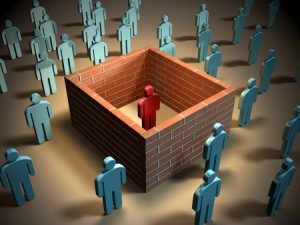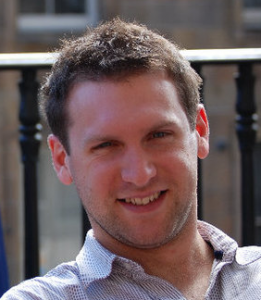 Jeanine Doherty, Au.D., M.Phil., M.B.S, B.Soc.Sci.(Hons.) of Hearing Excellence
Jeanine Doherty, Au.D., M.Phil., M.B.S, B.Soc.Sci.(Hons.) of Hearing Excellence
Christchurch, New Zealand
Two models of disability, the medical model and the social model, currently represent the opposing ends of the continuum of what defines disability (Berger & Lorenz, 2015).
The medical model sees disability as an individual’s bodily event and so concentrates on aetiology, diagnosis, prevention, and the treatment of the physical, sensory and/or cognitive impairments. Past scholars of disability often took this negative deviance medical approach; bioethicists and eugenicists have spent most of their energy on justifying the morality of preventing or even eliminating people with disabilities by the use of prenatal testing and abortion, or by withdrawal of care (Parens, 2001).
The social model of disability, at the other end of the spectrum, moves away from the impairment itself to consider the socially imposed barriers for the disabled, such as inaccessibility and unequal rights. It also considers the prejudicial attitude (i.e., stigma) that is constructed around any disability and results in sub-ordinate social status and a devalued life (Berger & Lorenz, 2015; Bickenbach et al., 2014). The social model evolved from the disability rights movements in the UK and USA in the 1960’s and 70’s, and carries the notion that a society should embrace all members and address socially imposed barriers.
Regardless of which model is used, stigma seems to be a universally understood experience. Stigma occurs as a process by which people stereotype, label, judge, and then discriminate against others who are different (While & Clark, 2010) and so they spoil any sense of normal identity for the other person.
Goffman (1963) outlined three causes of social stigma:
- overt, external deformations;
- personal trait deviations such as mental disorder or addiction;
- tribal/cultural deviations from a norm in terms of physical appearance like skin colour, dress style, religion, or behaviour.
Goffman added that stigma is the phenomenon whereby an individual with an attribute is deeply discredited by their society and therefore rejected as a result of the attribute.
Understanding Our Reactions
We are drawn to the unanticipated and the inexplicable in an effort to make sense of the experience, a universal part of our cognitive architecture that natural selection has bequeathed us (Garland-Thomson, 2006). We also experience aversion to others who do not fit into Goffman’s (1971) concept of normalcy. This aversion is a primitive response, demonstrated at the minimum with glancing or staring as a sifting mechanism to define safe or “otherness” status among those around us. For example:
I used to travel with a fellow Board member who had one of the first cochlear implants in New Zealand, which is very obvious as he has no hair to hide it. Walking through airports with him was fascinating as I watched others observe, try to decide what it was, understand/comment to their fellows about it and then finally return to their own activities. Before it could be socialised out of them, children had no concern about direct enquiry of David – “What’s that thing on your head, mister?” Being stared at by an adult can mean a lack of understanding, or at worst a social disregard, but children have the “curiosity excuse,” and he loved to take the pieces off his head and explain them to the fascinated child, while the parent often squirmed in embarrassment.
Although on the surface innocuous, staring is actually a strong reaction towards another person and excites the brainstem’s primitive level neural activity (Garland-Thomson, 2006), which is part of our fight or flight system. Stigmatic judgements are made with such fast glances and decisions. The inclination to stigmatize others has long been documented; for instance, in Roman times thieves and slaves were visibly tattoed to identify them as non-equal human beings.
Stigmatising another person can not only make the stigmatised person suffer negative consequences but can, conversely and perversely, enhance positive feelings of membership of the stigmatising tribe by the rise in self-esteem and sense of power that “doing others down” can bring (Falk, 2001). This tribal group-think against the stigmatised person has been used to justify terrible attacks seen worldwide, in which a stigmatised person – often intellectually disabled — holds little value and so can be beaten or killed as they are considered sub-human.
 The Impact of Labels
The Impact of Labels
When a label or stigma is applied to a person/group, there is a surrounding negativity or taint which engenders feelings of lesser worth in those subjected to the labelling. Being the subject of stigma can adversely affect the behaviour of the stigmatised by changing their emotions and beliefs (Major, 2005). The stigmatised person can become isolated, and then depression and lack of self-esteem can follow (George, 2015). Internalised stigma also leads to decreased hope and self-efficacy, and a poorer general quality of life (Nabors et al., 2014). This impact is not unique to hearing loss – just think about our seniors who have age labels, hearing loss, vision loss, cognition loss and physical disability labels to carry. Continue reading



 Carolyn Edwards, M.Cl.Sc., M.B.A.
Carolyn Edwards, M.Cl.Sc., M.B.A.
 Kris English, PhD
Kris English, PhD Soon I learned she has a busy social life and takes part in many activities, but having the hearing loss had started to affect all this. This patient has been coming to our clinic for over a year and had never had the chance to really speak about how the hearing loss was affecting her.
Soon I learned she has a busy social life and takes part in many activities, but having the hearing loss had started to affect all this. This patient has been coming to our clinic for over a year and had never had the chance to really speak about how the hearing loss was affecting her.


 Jane Seaton
Jane Seaton Audiologists as Reflective Practitioners
Audiologists as Reflective Practitioners Simon Howe, Clinical Scientist (Audiology), BSc (Hons), MSc
Simon Howe, Clinical Scientist (Audiology), BSc (Hons), MSc Eileen Rall, AuD
Eileen Rall, AuD
 Kerri Hudson, AuD
Kerri Hudson, AuD